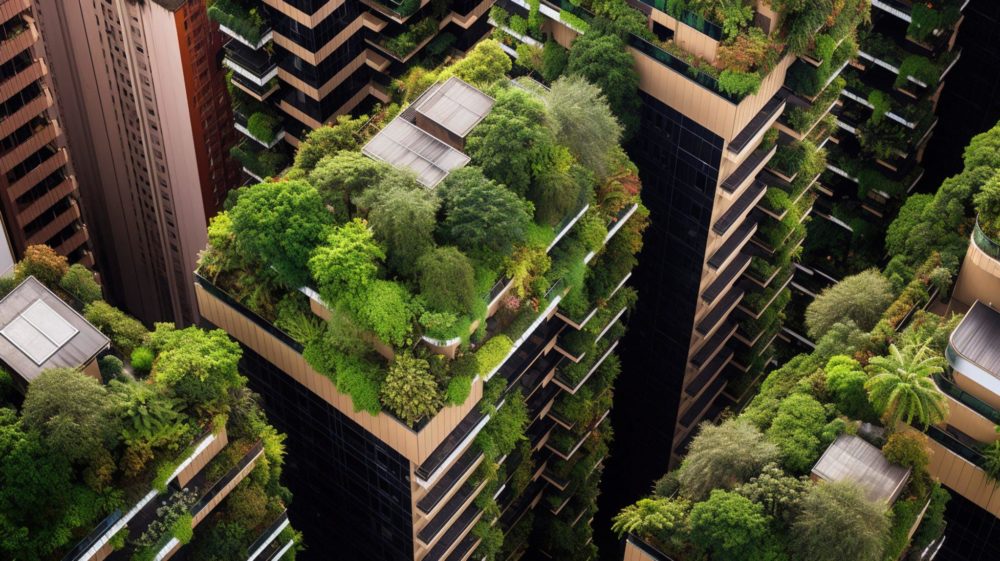
How can engineers design a better built environment using urban timber?

When we drink a glass of water, write in a notebook, take medicine for a fever, or build a house, we do not always make the connection with forests and trees. And yet, these and many other aspects of our lives are linked to them in one way or another.
Forests, their use and sustainable management, are key to combating climate change. They contribute to the prosperity and well-being of current and future generations. Forests also play a crucial role in poverty alleviation and in the achievement of the Sustainable Development Goals, a founding stone in TEDI-London’s curriculum and a core professional value of our future global engineers.
In this blog, we will explore how engineers can harness the potential of urban timber to create a better, more sustainable built environment.
Urban trees
It is important to remember that cities have their own forests and trees. As well as being a fond sight to local communities, trees in cities provide many advantages: from improved microclimates by managing heat islands and flooding risks, to promoting health and wellbeing of citizens.
Initiatives driving increasing tree/ forest coverage, also in cities, operate world-wide. One example is the United Nations Economic Commission for Europe ‘Trees in cities challenge’, launched in 2019. This initiative invites mayors and local governments worldwide to make a tree-planting pledge and set objectives for making their cities greener, resilient, and more sustainable. Canada Water, TEDI-London’s home, is no exception with its dedicated tree planting strategy.
As the Canada Water masterplan unfolds, however, a proportion of existing mature trees will also need be removed. Although these are pledged to be replaced over time, the local community is impacted by this transition.
This makes initiatives that positively and proactively engage with this urban tree resource a priority for the success of the masterplan.
In the pursuit of sustainable urban development, engineers play a pivotal role in reshaping our built environment. As the world grapples with the challenges of climate change, resource depletion, and environmental degradation, the need for innovative solutions is more pressing than ever. One such solution gaining traction is the incorporation of urban timber in construction projects.
The Rise of Urban Timber
Urban timber refers to wood sourced from trees within urban areas, often felled due to reasons like disease, storm damage, or construction activities. In London alone around 5000 to 10000 trees come down every year. Traditionally, this wood would be discarded or chipped for mulch. However, engineers, architects, and businesses are increasingly exploring ways to integrate urban timber into construction projects, recognising potential environmental and economic benefits:
1. Sustainable Material Choice
One of the primary advantages of using urban timber is its sustainability. Harvesting timber from urban areas reduces the demand for virgin wood from natural forests. By repurposing trees already present in urban environments, engineers contribute to the conservation of natural ecosystems and biodiversity. Moreover, urban timber has a lower carbon footprint compared to other building materials, making it an eco-friendly alternative.
2. Reducing Waste and Promoting Circular Economy
Repurposing urban timber aligns with the principles of a circular economy. Rather than allowing felled trees to become waste, engineers can repurpose them into valuable construction materials. This not only reduces the burden on landfills but also minimizes the need for energy-intensive processes associated with the production of traditional building materials. By embracing urban timber, engineers can contribute to a more sustainable, closed-loop system in the construction industry.
3. Enhancing Urban Aesthetics and Connectivity
Beyond its environmental benefits, incorporating timber into architectural designs fosters a harmonious blend of nature and infrastructure, creating visually appealing and community focussed spaces. Using timber from local trees to create something new in the area it grew in also ensures its story and interaction with the community can continue to live on.
4. Adaptable and Innovative Designs
Urban timber offers engineers a versatile material that can be used in a variety of construction applications. From structural components to façades and interiors, the adaptability of timber allows for innovative and sustainable design solutions. Engineers can leverage the strength and flexibility of timber to create structures that are not only resilient but also aesthetically pleasing. This adaptability opens the door to a wide range of design possibilities, fostering creativity in urban planning and construction.
5. Addressing Urban Heat Island Effect
Urban areas often suffer from the heat island effect, where impervious surfaces absorb and retain heat, leading to elevated temperatures. Urban timber, with its natural insulating properties, can play a role in mitigating this effect. By incorporating timber elements in construction, engineers can contribute to creating cooler and more comfortable urban spaces. This not only enhances the quality of life for residents but also reduces the energy demand for cooling systems.
Urban trees in Canada Water
As engineers continue to seek innovative solutions for sustainable urban development, the integration of urban timber emerges as a promising avenue. By repurposing trees from urban environments, engineers can contribute to a circular economy, reduce environmental impact, and create aesthetically pleasing, resilient structures. As the demand for sustainable building practices grows, embracing urban timber represents a tangible step towards forging a better, more harmonious built environment for future generations.
This is why our January 2024 Winter School students will help tackle this challenge alongside local community partners, British Land and YesMake, to help maximise the impact and contribution of tree resource in and around Canada Water.
Our 18 students, who travelled all the way from UNSW Sydney and Canberra, bring with them a pool of multidisciplinary skills and mindsets. The challenge will provide the opportunity to innovate hands-on by designing community-fit timber processing methods to consider within Canada Water’s wide intervention options. Their prototypes, which they will be able to assemble by also accessing Yes Make’s workshops next to TEDI-London, will then be showcased on campus to business partners and the local community.
We are excited to see how they will approach this brief alongside our business partners and the local community, and we look forward to sharing their solutions with you!
More News articles


5 design innovations supporting a healthy planet
